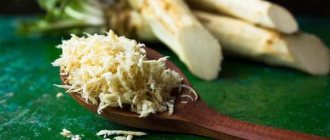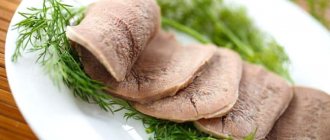How to quickly peel jacket potatoes
Jacket potatoes are especially tasty. To avoid the hassle of peeling boiled vegetables, use a trick that has long been used by housewives to separate the shells from boiled eggs.
Read also: Astheno-vegetative syndrome
Action plan:
- Pour cold water over hot vegetables for 10 seconds (add ice to the water for better effect).
- Using a sharp knife, cut the skin down the center of the potato.
- Take the root vegetable in two hands and press the peel with your fingers.
- The peel will instantly come off without any effort.
If you make an incision in the peel before cooking the potatoes, the time the cooked vegetables spend in ice water is reduced to a few seconds.
Sieve
Place the young tubers in a saucepan or deep bowl and place under running cold water. Once wet, the peel can be easily peeled if you rub it against the surface of a sieve. This method is especially good for peeling small potatoes.
Coronavirus has become eight times more dangerous: mutations have affected
“Albino girl is my love”: Elena Podkaminskaya tries herself in the role of an oligarch’s wife
February 22-27 Week of the Publican and Pharisee: why on these days they prepare for fasting
How to quickly peel new potatoes with salt
It is quite possible that you have never heard of this method of peeling potatoes. Nevertheless, many housewives prefer to use “white death” for this. The main argument in favor of this is the speed of cleaning, which is quite fair: yes, it doesn’t take long to peel potatoes with salt.
So, we describe the whole process step by step:
- Wash fresh potatoes.
- Take a regular transparent cellophane bag, in which market sellers put purchased vegetables for you (the main thing is that there are no holes in it).
- Pour salt there. Follow the principle “the more the merrier”, but don’t overdo it.
- Place all the potatoes in a bag (if there are a lot of them, then in portions) and tie them tightly in a knot.
- For 10-15 minutes, grind the potatoes in the bag together well (salt, slipping between them, will gradually peel off the skin).
- When you see and feel that everything is ready, remove the potatoes and wash them again.
Related article: Technology for growing potatoes without hilling and weeding
Some people do this procedure in a saucepan, but this is very inconvenient and is only suitable for those with strong hands, because within 15 minutes this vessel will need to be shaken quite a bit.
Preliminary preparation
Before peeling potatoes, they must be washed in running water or in a bowl. Some housewives prefer to peel dirty tubers and wash them after removing the peel. But you need to remember that in the soil stuck to the potato skins there are many particles of semi-decomposed organic matter, which is used to fertilize the beds.
Read also: History of the Middle Ages
When cleaning, dirt mixes with the juice, is absorbed into the pulp and is difficult to wash off. True, after this the tubers are subjected to heat treatment, due to which the likelihood of contracting dysentery is negligible, but the danger should not be discounted. Washing potatoes before peeling is much more hygienic.
If a teenager peels potatoes or an adult housewife has an uncomfortable knife, the blade can slip off the wet peel and injure your hand. Therefore, it is better to dry the tubers with a paper towel after washing.
Peeled potatoes are immediately immersed in cold water, otherwise they will darken. Slicing begins only when all the tubers are cleaned.
Read also: How I made a face for Grandfather Frost
How to Peel New Potatoes to Keep Your Hands Clean
If you peel potatoes with a knife, be sure to stock up on medical or rubber gloves for the coming harvest season. This will save your hand skin from the formation of dark spots. Alternative: wet your hands with lemon juice (a concentrated solution of citric acid) or table vinegar. Wait for the liquid to dry on its own and begin cleaning.
The tubers can be boiled in their skins, discarding them afterwards. To do this, make a cut around the circumference of each vegetable (as if you want to divide it into 2 equal parts). Boil until almost ready, transfer to a container with ice water for 10 seconds. You can remove the peel with your fingers - you have never done this so easily before.
Steps
Method 1 of 2:
Using a potato peeler
1
Hold the potatoes in one hand and the potato peeler in the other. Stand near the sink or over the trash can before you begin peeling the potatoes. This way you won't end up with potato skins flying all over your kitchen. There are two main "models" of potato peelers; Here's how to hold each one: If you have a standard oblong potato peeler, hold it like a paint roller so that your thumb balances it between your fingers but is still away from the blade. If you have a Y-shaped potato peeler, hold it like a pencil. This route is more effective and you are less likely to hurt yourself. It should lie between the middle and thumb (of the working hand), and your index finger should hold it in this position.
2
Starting at the base of the potato, slowly peel the skin away from you. Imagine drawing stripes by moving the knife away from you and keeping your elbow close to your body. Start at the base and try to make one quick motion along the entire length of the potato. Ideally, you should end up with strips of peeled peel. This applies to both types of potato peelers, even the y-shaped ones. While it's possible that grandma held it differently and painted it differently, you'll get results in peeling a lot of potatoes this way. Potatoes are a little harder to peel than other vegetables; the skin will peel off in chunks, especially if the potatoes are not smooth and round.
Pay special attention to peeling the last bits of peel; they need more processing (and slower cutting so you don't hurt yourself).
3
Turn the potatoes and continue the peeling process. Once you finish one side of the potato, turn it in your hand, master the rhythm - peel and turn, peel and turn
Don't worry about cleaning the top and base, just yet.
4
Trim away dark spots. You may notice that when the inside of the potato is opened, dark spots are visible. This is quite normal - there are few perfect potatoes. Focus on this area and continue cutting until there are no dark spots left.
5
Continue the process with the top and bottom of the potatoes. This part is cleaned as if you were shaving your knee - by aiming the potato peeler as best you can around the curve and working your way back to the small spots, you will inevitably end up finishing this process.
Method 2 of 2:
Removing the Skin of Boiled Potatoes
- 1
Place the potatoes in a large pot of water.
The pan should be large enough so that the potatoes are completely covered with water without being crowded. The water level should be at least 2.5 - 5 cm above the potatoes.
- 2
If desired, make slits in the potatoes.
You may notice that potato skins are easier to peel (or at least easier to grip) if there is a groove. Simply make a line in the skin (about only 0.6 cm deep) around the center of the potato, like an equator.
- 3
Keep it in boiling water for about 15 minutes.
In a good sized saucepan, 6 or 7 potatoes should cook for about 15 minutes. You will need more or less time depending on the amount of potatoes. When you think the potatoes are done, pierce one potato with a fork—if it pierces the skin and then slides right in, it's done.
- 4
Once the potatoes are cooked, plunge them one at a time into ice water for 5-10 seconds.
Keep a bowl of ice water on hand for when the potatoes are done. Take each potato with tongs (do not touch the potato immediately) and place it in a bowl of ice water.
- In order to cool down, they should not remain there for too long - 5-10 seconds is enough.
For each potato you may need to add an ice cube or two to the water, the heat from the potato will also transfer.
- 5
Peel the peel.
Magic: just press the peel with your fingers and it will immediately fall off like a tablecloth. If you have cut a potato, place your thumbs on this line and pull towards the end of the potato, the potato skin will remain in your fingers.
Adviсe
- Use the pointed tip of a knife to remove the potato eyes. Simply stick the tip into the potato and twist with a flick of your wrist.
- Save the peel and add it to soup or roast it. Potato skins are full
vitamins and minerals and should not be wasted.
- Potato peelers are sharp. Be careful when holding the potato because the knife can often “jump” when you get into a difficult situation while peeling.
- Do not throw cleaning materials into the garbage disposal. This can be a real cause of damage to your garbage disposal and will cost you more in the end.
Advice for the very lazy or why you don’t need to peel young potatoes
For some reason, it’s customary for us to clean and wash thoroughly
many vegetables from cucumbers to potatoes. This is understandable, because vegetables must be washed, especially when they have just been brought from the garden, because dirt is layered on them. Yes, and we have been taught since childhood that fruits, berries and vegetables must be washed thoroughly, because without this action we can expect problems with digestion. And this is actually true.
But for some reason there are no rules regarding peeling vegetables.
It is clear that when potatoes are old, their skins have already lost all their nutrients and, of course, need to be peeled and thrown away. Or take cucumbers that have bitter and hard peels that simply need to be thoroughly peeled.
But when the tubers are fresh and young,
full of vitamins so that we can develop healthy - this is a completely different matter. Here it’s worth thinking about and deciding for yourself whether it’s worth peeling young potatoes if their skin contains a lot of nutrients: vitamins B and C, phosphorus, potassium and iron. Moreover, young potatoes are able to quickly remove fluid from the body, which is very conducive to weight loss. Here it is worth thinking about whether it is really necessary to peel the skins of young potatoes?
A way out has been found
Recently, while browsing new recipes on my favorite cooking sites, I accidentally found a useful tip that allows you to peel peaches very quickly. If you boil them for a few minutes and then place them in ice water, they will peel easily. I admit that I was interested in this method. I tried it, and I was pleased with the result: the peel easily slid off the peach pulp, and I was able to peel more than a kilogram of fruit in a matter of minutes.
Then I thought that I could try this method for peeling potatoes. It turned out that it works in this case too. Many soft-skinned vegetables and fruits are much easier to peel if you boil them and then place them in ice water for a few minutes. Today I want to share this simple and useful way.
Each housewife has her own opinion on the need to peel potatoes, especially when it comes to making mashed potatoes. For example, I like the special texture that the delicate skin gives to the puree. In addition, the peel retains many useful substances even after boiling. However, my youngest son Andrei is categorically against my experiments. Luckily for him, this technique allowed me to peel potatoes quickly, so I use it often now.
How to peel potatoes boiled in their jackets?
A root vegetable cooked in its jacket is much easier to peel than a raw one. Despite this, there are several effective methods that can be used to help make the process even easier.
Quick peeling of boiled potatoes
Ready-to-eat potatoes must be peeled so that they do not fall apart into small pieces. To do this you need to do a few simple steps. Among them are the following:
- Pour cold water into a bowl and put a few pieces of ice in it.
- The potatoes, boiled in their jackets, are removed from the boiling water and immediately placed in ice water.
- After 30 seconds, the tubers are removed and a transverse cut is made on the skin.
- Then, with a light movement, remove the peel, starting to separate it from the edible part at the cut site.
- Do the same with all other vegetables.
How to peel with a knife and fork?
Thanks to these cutlery, you can quickly separate the peel from the edible part. This method makes it possible to peel potatoes without waiting for them to cool to a comfortable temperature.
Step-by-step instruction:
- First of all, take a fork and prick the boiled potatoes.
- The vegetable is removed from the boiling water and placed on a cutting board.
- Without removing the fork, begin to scrape the skin with a spoon, gradually peeling it off.
- Then the root crop is turned over and the same steps are repeated.
Conditions
Temperature
5 ways to fix over-salted food
The most suitable temperature for storing potatoes (at any time of the year) is 2-3 degrees Celsius. At this temperature, it is at rest, that is, roots do not grow and nothing freezes.
If the temperature is higher, the tubers will begin to “wake up” and prepare for spring planting.
The process of “awakening” potato tubers:
- The eyes are awakening.
- Sprouts are growing.
And in the peel (in the upper layer) solanine (a toxic substance) begins to accumulate. If the temperature is close to 0 degrees, this will significantly affect the taste of the potatoes. It will have a sweetish aftertaste that can spoil the taste of any dish.
This happens because starch turns into sugar at low temperatures, and slightly frozen potatoes begin to deteriorate very quickly.
Air humidity
Requirements for air humidity when storing potatoes:
- The optimal humidity should be ensured at the level of 80 - 85%; with such parameters, the tubers will not “dry out”, that is, they will not lose their weight during storage.
- In dry air, the taste of potatoes deteriorates, the tubers become dry and lethargic, and their juiciness disappears.
- If, on the contrary, the humidity in the vegetable storage is too high, then fungal diseases and rotting of root crops may occur.
Other
Conditions for storing potatoes:
- Ventilation must be provided.
- It is not allowed to cement the bottom of the vegetable storehouse or cover it with floorboards, linoleum and other similar materials, because moisture will easily accumulate and mold will gradually appear. It is best to fill the bottom with sand, or small crushed stone or pebbles (materials that absorb moisture well).
- Two weeks before storing tubers in a vegetable storehouse, it must be disinfected. After any treatment, the storage must be closed for two days and then thoroughly ventilated.
- Potatoes should not be exposed to direct sunlight; because of this, they will begin to accumulate toxic glycosides (turn green), and it will no longer be possible to eat them.
- No “neighbors” are desirable for this root crop; the only exception can be made for beets (it is better to place them on top of the potatoes) - this is a favorable “neighbor.” Beets perfectly absorb excess moisture, and they do not harm this root crop.
- If you have to remove rotten potatoes, then you need to remove not only one tuber, but also those that were lying nearby (with close contact, all nearby tubers are infected with infection, even if they look healthy outwardly).
- It is necessary to prevent various pests from entering the storage facility from the outside: rats, mice and slugs.
Difficulties in storing potatoes arise due to starch and water, which are contained in large quantities in the tubers.
Not everyone has a vegetable storage facility, so many will be interested in other ways to store potatoes: on the balcony, in a box.
Peeling potatoes with a knife
A knife is one of the main tools in the kitchen. This is what every person who decides to peel any vegetable thinks about. Although this is a popular tool, it is far from the best. We'll talk about this in the next section. Now there will be instructions on how to properly peel potatoes with a knife.
Preparation:
- Wash the fruits thoroughly so that no dirt or plaque remains on them;
- Sharpen your knife. Potatoes are a tough product; a dull knife can turn peeling into a real pain;
- Prepare a bag or container for cleaning;
- Prepare a container for clean potatoes.
- Fill the container with water. This is a very important point, because clean potatoes in the air begin to quickly darken and lose their visual appeal.
Cleaning
If you are right-handed, then take the potato in your left hand and the knife in your right. If you are left-handed, then vice versa. Turn the blade towards you. With the thumb of the hand holding the knife, focus on the potato. Carefully move the blade towards you, cutting off the peel. Sort through the potatoes as you peel them.
Why do peeled potatoes darken and lose their taste?
Tubers always darken after cleaning. This happens for the following reasons:
- Raw potatoes contain sugar (about 0.9%). When interacting with amino acids (enzymes), they are destroyed, and a change in organoleptic properties occurs: taste, color, smell. Therefore, the less sugar in the tubers, the longer the potatoes will be stored.
- Potatoes also contain microelements - iron, calcium, magnesium, potassium, sodium, etc. When they interact with oxygen, an oxidation reaction occurs, the product gradually turns black and loses its taste. If you block the access of oxygen, the process slows down.
There are no similar posts
Within a couple of hours after peeling, peeled potatoes begin to become covered with a dark coating.
The reason is the substances tyrosinase and tyrosine, which are contained in the tubers of this product. Upon contact with air, tyrosine, which is initially colorless, oxidizes, creating a black-brown substance. Vegetables treated with nitrogen fertilizers lose their appearance faster than those grown at home without the use of chemicals.
There are several ways to slow down blackening and deterioration. Some of them are acceptable only in large industries, while others can be used in a regular kitchen.
Use of vegetable peelers
Using a vegetable peeler is much easier and safer than using a regular knife.
The most popular vegetable peelers:
- with a horizontal blade (Y-shaped, Fig. 3);
- with a blade located on the side (Fig. 4);
- straight (Fig. 5).
Rice. 3. Peelers with a horizontal blade
Rice. 4. Peeler with vertical blade Fig. 5. Direct peeler
The most economical way to remove peels is with a floating blade, which follows the contour of the tuber during operation. When choosing a device, you need to pay attention not only to the blade, but also to the handle: it should be made of non-slip material.
A straight vegetable peeler is especially convenient; it can be used to cut the peel in both directions: towards you and away from you (a strict tuber, like a pencil), and with the tip you can easily cut out the eyes. It is safer than other vegetable peelers: the blade is protected on both sides, so even children can use it.
Manufacturers and most popular models
How to properly fry delicious potatoes
The choice of a professional potato peeler must be approached based on the volume/performance/price/dimensions ratio.
Cars from leading domestic manufacturers, foreign (Italy), as well as CIS countries (Belarus) are popular among catering establishments.
The quality, functionality, interesting design at an affordable price attract the attention of buyers from the Italian Fimar devices. The machine body is made of stainless steel, a transparent lid for easy control coupled with easy unloading of purified products - in general, everything is thought out
The structure of the abrasive is similar to sandpaper, which makes the cleaning process more gentle. Plant productivity: from 60 to 500 kg/hour. Working chamber volume: from 5 to 18 kg.
Among domestic analogues, it is worth paying attention to the K-200 potato peeling machines manufactured by Torgmash LLC (Perm) and MOK_300A TYPHOON by Atesy (Moscow). The Perm device is practically not inferior to imported machines either in design or functionality
Made in a floor-standing version. It operates on a 380 V network and is capable of peeling up to 200 kg of potatoes or carrots per hour with a simultaneous load of 8-10 kg. Plus, it is the first domestic model to use environmentally friendly Cubitron ceramics in its abrasive. The Moscow-made installation differs in the location of the abrasive discs. They are installed inside the working cylinder, due to which cleaning takes place without significant loss of the edible part of the product. The peel is not cut off, but actually sanded. The design of the machine is durable, because it is made of stainless steel and the seams are welded. With a one-time loading, the productivity exceeds 300 kg/hour.
Belarusian batch potato peelers MOK-150M and MOK-300M produced by Republican Unitary Enterprise "Torgmash" can successfully handle beets and carrots in addition to potatoes. These devices have proven themselves, first of all, for their reliability.
The Italian Sirman and the Swedish concern Electrolux have good models. Scandinavian machines also offer a large selection of accessories for cleaning onions, seafood and even drying herbs.
Let's try to systematize the main ways to easily peel young potatoes
What will you need for cleaning?
- Water
- A special short knife designed for peeling potatoes
- Any capacity
- Vegetable peeler (saver knife)
- Nozzle - brush
- Sieve
- Drill
- Metal sponge
registry registry ÑиÑÑкой
RESULTS RESULTS ¸ овоÑа. ROOM ROOM ½Ð¸ .
registry:
- RESULTS, RESEARCH ASSURANCE CONDITIONS ·Ð¸ÑÑ Ð¿Ð¾ каÑÑоÑÐµÐ»Ñ Ð²Ð¾ вÑÐµÐ¼Ñ ÑиÑÑки.
- RESULTS.
- СоÑкÑебаÑÑ, а не ÑнимаÑÑ Ñлой кожÑÑÑÑ.
- RESPONSIBILITY
- RESPONSIBILITY RESULTS.
ROOM I'm sorry. RESULTS RESULTS. registry ¿Ð°Ñна. RESULTS ROOM, ROOM ¸ÐµÑÑ Ð¸ им не ÑÑÑаÑна коÑÑозиÑ.
RESULTS ¾Ð±Ð»ÐµÐ½Ð¸Ñ:
1. RESULTS, а в дÑÑгой â овоÑеÑиÑÑка.
Read also: What does it mean to be a good friend?
2. RESPONSIBILITY
3. ROLLING UP I'm sorry.
ROCK ROOM. RESULTS мÑÑÑ Ð² конÑе. "Resort" ¾ поÑле мÑÑÑÑ ÐºÐ¾Ñнеплода.
How to properly peel young potatoes
Despite the fact that young potatoes can simply be peeled with a regular knife, the procedure should be carried out in compliance with certain rules. In addition, there are several other ways to remove the peel from the surface.
Traditional cleaning method
Usually, young potatoes are not peeled, but simply scraped off the skin. For the procedure you will need a small vegetable knife and running water.
Action plan:
- Remove sand and dirt from the surface of the root crops.
- Lightly scrape the skin off the surface.
- Rinse each potato under the tap to remove excess skin.
- Cut off eyes and dark spots.
Peel new potatoes with salt
Try removing the skin from the surface of the potato using regular salt. For the procedure, you will also need a container with a lid or a tight bag.
Procedure:
- Place vegetables in a bag or container.
- Add rock salt to potatoes.
- Shake the pan or bag thoroughly several times.
- Remove any remaining skin by rinsing the potatoes under running water.
Pay utmost attention to the choice of container for cleaning: if it is a bag, it must be strong enough not to tear from mechanical stress, and if it is a pan, the lid must close tightly.
How to clean with a sponge
You can quickly peel young potatoes using a metal dish sponge. For safety reasons, use only new, rust-free sponge.
Cleaning process:
- Wash the potatoes.
- Rub the surface of each potato with a metal sponge.
- Remove the eyes with a knife.
- At the last stage, wash the already peeled potatoes again to remove excess peel.
Clean with a sieve
The method is suitable for peeling small young potatoes, as a result of which the root vegetables will remain without peeling and their integrity will be preserved.
Description of the method:
- Select a small sieve with small cells.
- Pour the potatoes into a sieve and place in the sink.
- Turn on the water.
- Roll the vegetables on the grid under running water several times.
- Remove any remaining eyes.
- Before cooking, thoroughly wash the already peeled potatoes.
Storage periods and methods
What can you use to cook new potatoes?
How long does it take to cook the product after boiling water? The correctly chosen option preserves potatoes in proper quality for up to two days. At home they practice:
- Soaking in cold water (not warm or hot). The tubers are not cut, they are left whole.
- Store in the refrigerator in a plastic bag/film, from which the air is displaced as much as possible. It is the air that promotes rapid spoilage. This method is not suitable for preserving fresh cucumbers for a long time.
- Scalding root vegetables. Then they are filled with water or simply placed in a bag/film and put in the refrigerator.
- Freezing. Before this, the vegetables are poured with boiling water so that they last longer (up to 2 days) and do not spoil, and also maintain their appearance.
Do you peel potatoes for future use?
Not really
There are several rules for cleaning and preparation:
- the potatoes are washed well and cleaned of dirt;
- green tubers are thrown away as they are hazardous to health;
- eyes and other damage are carefully cut off;
- For old potatoes, together with the peel, remove a small part of the top layer located under the peel;
- It is not recommended to immediately cut into small pieces - only before cooking;
- For cleaning, use a regular kitchen knife or potato peeler.
Eating tubers that have turned green inside is dangerous to health, even after heat treatment.
The choice of option determines how long it will be possible to store peeled potatoes in an unchanged state:
- There are 3-4 hours left before cooking, then the potatoes must be completely filled with water. To increase the time to 5-6 hours, the root vegetables are scalded with boiling water. After cooling (drying), wrap it in cling film and place it in the refrigerator. Additional tip: scalded potatoes are filled with water and then put in the refrigerator. This way the root crop will last longer.
- If you plan to leave the root vegetables overnight (for half a day), then put the drenched tubers in the refrigerator.
- Cooking is planned in a day. The potatoes are placed in the freezer, after drying and wrapped in cling film. It’s a good idea to pour boiling water over the potatoes before freezing.
- If the preparation will take two days, then use deep freezing. Root vegetables are washed well, cut into slices, dried and placed in the freezer. This method is also suitable for preserving horseradish root.
Frozen potatoes become sweeter, which affects the taste of finished dishes. Try to plan your cooking so that peeled vegetables do not have to be frozen.
The storage time for peeled potatoes in cold water is 3-4 hours. Refrigerate for up to 12 hours. If frozen, potatoes will be edible for 1-2 days.
How they peel potatoes in the army and in production
Under production conditions, potatoes are peeled in several ways:
- Thermal - by treating the tubers with steam under high pressure.
- Chemical - applying caustic soda to root crops, which corrodes the peel.
- Mechanical - removing the skin by placing the potatoes in a machine with special knives and rough walls.
The stereotype associated with the fact that in the army soldiers peel potatoes has long been outdated. Now special personnel from civilians are recruited to work in the kitchen, who are engaged in the delivery, preparation and preparation of food for military personnel.
Drill cleaning
The most original way is to clean it using a drill and a toilet brush. Thus, you can cope with such a difficult task as quickly peeling small new potatoes. You can handle it within 3-5 minutes. It is advisable to use it for residents of private houses, since it is quite noisy.
Technology for peeling potatoes using a drill:
- Place the vegetable in a bucket of water
- Cut a new toilet brush in half.
- Insert it into the drill.
- Turn on the tool and lower it into the bucket for 2-3 minutes.
It is important to ensure that the drill does not get wet or drop water, as this is dangerous. Using this method, you can cope with such a difficult task as quickly peeling small young potatoes. It only takes a few minutes. The disadvantage is that the hammer drill sprays a lot of dirt around itself.
Using the housekeeper
Using miniature vegetable peelers (housekeepers) you can greatly simplify the process of peeling potatoes. The peel is cut off in thin layers of approximately the same thickness.
In this case, the tubers should be washed in advance so as not to introduce dirt onto the already cleaned parts.
This is the most common way. The peel from the tuber is cut off in a circular motion or towards you. This method is more suitable for experienced people. The likelihood of cutting yourself when cleaning with a knife is very significant.
Purchasing an electric vegetable peeler will help you get rid of one problem and immediately create another.
We'll have to decide which is more unpleasant: peeling potatoes
manually or wash a dirty potato peeler every time.











